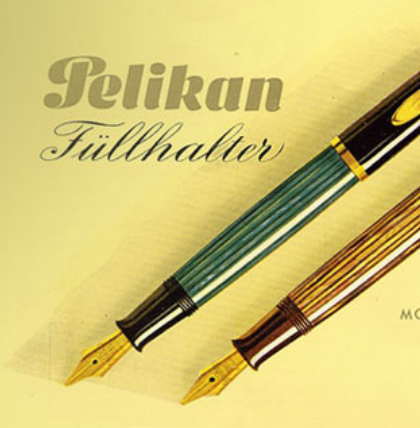
In artistic depictions, this series reminds of culture-historical achievements that were of importance for the development of human civilization.
Year

2007
Edition of 930 specimens
For thousands of years, the accumulated knowledge of humankind, the diverse cultural achievements of different peoples, their legends, and their histories could only be transmitted by word of mouth. As a result, much was irretrievably lost. Only with the invention of writing did it become possible for such ancestral lore to be preserved for coming generations in its original form.
Pelikan is celebrating this quantum leap in the history of human civilization, “Evolution of Script”. With this, Pelikan is looking back to the origins of writing thousands of years ago: from the cave paintings that were the precursors of writing, via the invention of hieroglyphics in Egypt and Mesopotamian cuneiform, to the development of the Greek alphabet as the point of departure for European scripts.
The high-grade resin cap is engraved with cave painting motifs. The barrel, which is gold-plated with lacquer embellishments, displays the other early forms of writing as finely drawn symbols, hand-engraved in masterly fashion. The individual epochs are visually separated by gold-plated rings, to symbolize appropriately the line of development.
The incomparable nature of this collectors' item is very apparent in the 18-carat gold nib, which will be embossed with a different design for each edition. On the clip, the shape of which reflects the overall form of the pen, the same pattern as is embossed on the nib is repeated in high relief, recessed into the clip.

2008
Edition of 760 specimens
Dividing and measuring time as it passes – man has always focussed on this by observing nature. Above all, astronomical events such as the movement of the sun and the different phases of the moon are clearly identifiable thanks to their periodical recurrence.
From these, our forefathers once developed the calculating units for year, month, day, and hour. The year with its different seasons is calculated from the orbit of the earth around the sun. The month corresponds with the movement of the moon around the earth and the change in the phases of the moon. The day results from the rotation of the earth around itself and the consequent change of day and night. In the further course of history, the sun served to divide the day into hours and minutes.
From the orbit of the moon around the earth, which lasts just under 30 days, man divided the year into twelve months. Lit by the sun, only one half of the moon is turned towards the earth. Based on the position of the moon and sun are and the relation to each other, we see varying amounts of the moon's illumination. The four phases of the moon which can be seen, new moon, first quarter moon, full moon and last quarter moon, are embossed on the cap of the Pelikan fountain pen in high relief.
In ancient times, the Babylonians and Greeks used the position of the sun in the sky and created the first sundials. A vertical shadow stick, whose shadow fell on a clock face, served to measure time. Pelikan has engraved the structure of a sundial with eleven marked hours onto the cap of the fountain pen. The twelfth hour appears as an embossed high relief in the lower part of the clip, which at the same time adopts the symbolic function of the shadow stick.
Early developed cultures liked to show the cycle of the year in pictures. Each month is represented by an activity or event adapted to a season. On the Pelikan fountain pen, a cycle from the early Middle Ages can be found. Themes such as sowing seeds, harvesting, and use of natural products characterize these early calendars or months in pictures. The seasonal vegetation cycle can also be recognized.
Today in many parts of the world the Gregorian calendar is used. Named after Pope Gregory XIII, it was adopted after numerous calendar reforms due in part to its precision and ability to accurately mark time at the end of the 16th century.

2010
Edition of 500 specimens
The third fountain pen in the series “Achievements of Civilization” celebrates the art of taming fire. The two previous models were “Evolution of Script” (2007) and “Calculation of Times” (2008). The most important motif is the bowl filled with fire. History tells us that in former times, our ancestors had to wait for lightning to strike before they could 'catch' the flames. They filled skulls with oil to preserve the special flames that gave warmth, kept wild beasts at bay and helped to prepare food. Today, fire is just a match away, but to celebrate this achievement of civilization, the bowl of fire is depicted on the clip, the especially created nib, and the cap.
The barrel is made of brass and lacquered several times in a vivid red. Every flame on the barrel is first lasered, then plated with 24-carat gold. Five real Topaz gemstones make the sparks come alive. The nib is made of 18 carat/750 gold and has an iridium grain at the tip. This Limited Edition is available in the nib sizes F, M, and B. When burning wood, our forefathers learned to produce embers hotter than 500° Celsius (900° Fahrenheit) that were valuable for their survival.


